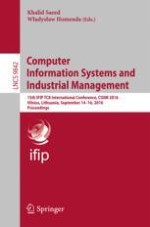This book constitutes the proceedings of the 15th IFIP TC8 International Conference on Computer Information Systems and Industrial Management, CISIM 2016, held in Vilnius, Lithuania, in September 2016.
The 63 regular papers presented together with 1 inivted paper and 5 keynotes in this volume were carefully reviewed and selected from about 89 submissions. The main topics covered are rough set methods for big data analytics; images, visualization, classification; optimization, tuning; scheduling in manufacturing and other applications; algorithms; decisions; intelligent distributed systems; and biometrics, identification, security.
